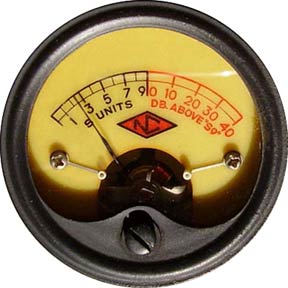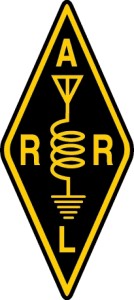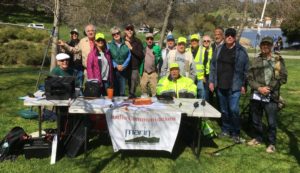Our clubhouse already looks better even though the painting is not quite done. The weather continues to delay completion. Our clubhouse in financial terms our greatest asset as for many of us, our homes are. In the case of MARS when we were donated the clubhouse it was with the condition that we cannot sell it. We are only allowed to donate it to another nonprofit organization. However it is our principal source of income at around $30K per year. Having a clubhouse allows us to gather at the time of our choosing rather than schedule with other users. In the last few years we have been doing some of the expensive projects that a homeowner has to do. We replaced the sewer lateral, replaced the roof, improved the drainage from the deck, and painted the building. We were able to accomplish all of these tasks without borrowing money and without asking our members to contribute extra. If you look at our February balance sheet it shows that we have more than $60K in the bank. Sounds like a lot. However more than half of that is a grant we received for improving the North Bay Area Mesh network and so is not available for work on the clubhouse. We also have other projects in the planning stages including painting the interior of the clubhouse, improving site drainage, and replacing our aging repeaters. To turn those plans into reality we need to replenish our bank account and to do that I am asking for your help.
It is traditional in fundraising campaigns to use the image of a thermometer as a quick graphic to show progress. We are a radio club and it seemed to me that some other graphic might be more appropriate for us. To that end I have chosen the S meter. While most amateur radio receivers have some display of received signal strength, many of us remember an actual meter calibrated in “S” units which ran from 0 to 9 and then in decibels above the 9. We would give the other station a signal report in the RST format for Readability, a scale of 1 to 5, Strength on a scale of 0 to 9, and Tone again on a scale of 0 to 9 with a perfect signal report being 599. The strength number was read off the S meter. Of course this was long before the 1984 movie This is Spinal Tap with the bit about volume (gain) controls going up to 11. The S meter went over 9 and so you might report receiving a station at 40 over S9 meaning 40 decibels above the 9 mark on the meter. So here we are.

The board has asked me to raise half the cost so that would an S9 but we can hope for that treasured 40 over S9 which represents the total cost. If all our members donated $160 we would reach 40dB over. To donate go to http://w6sg.net/donate-full-width-page.php
Amateur Radio
What do you imagine when you hear the words “ham radio”? If you are like most people, you picture retired men sitting with surplus World War II radio equipment using morse code to discuss the weather, and their radio equipment. We’ll, that’s kinda true. But! There is a lot more that you likely haven’t heard much about.
Amateur radio operators have always been on the leading edge of technology, and that is still true in today’s high-tech world. Amateur radio operators worldwide continue to break new ground in the art & science of radio communications. From local 2-way radio voice communications, to communications through satellites, or communicating worldwide using any of a dozen different digital modes , ham radio has something for everyone. (How about bouncing a radio signal off the moon?)
It’s not always about the technology. Amateur radio operators all over the world regularly volunteer to provide communications for special events like marathons, bike races, parades and other public service events.
Click here to find out when and where club meetings and other activities are taking place. Guests are welcome to all meetings, so come on down to the clubhouse and say hello.
Whether you are already a licensed amateur, or would just like to learn more about ham radio, take a look around the website, click on a few links of interest on the Resource page, or Contact Us with questions.
Best Practices video produced by Brian Cooley K6EZX
https://www.youtube.com/watch?v=HHxNOMGSwAI
Click here to see our 2024 Public Service Signup List v17.1.
We are grateful to have wonderful help from our East Bay operators. Looking for more fun? Click here to see MDARC Public Service events
A Brief History of Amateur Radio
QSA-5 Newsletter
Click here to read back issues of our monthly newsletter.



